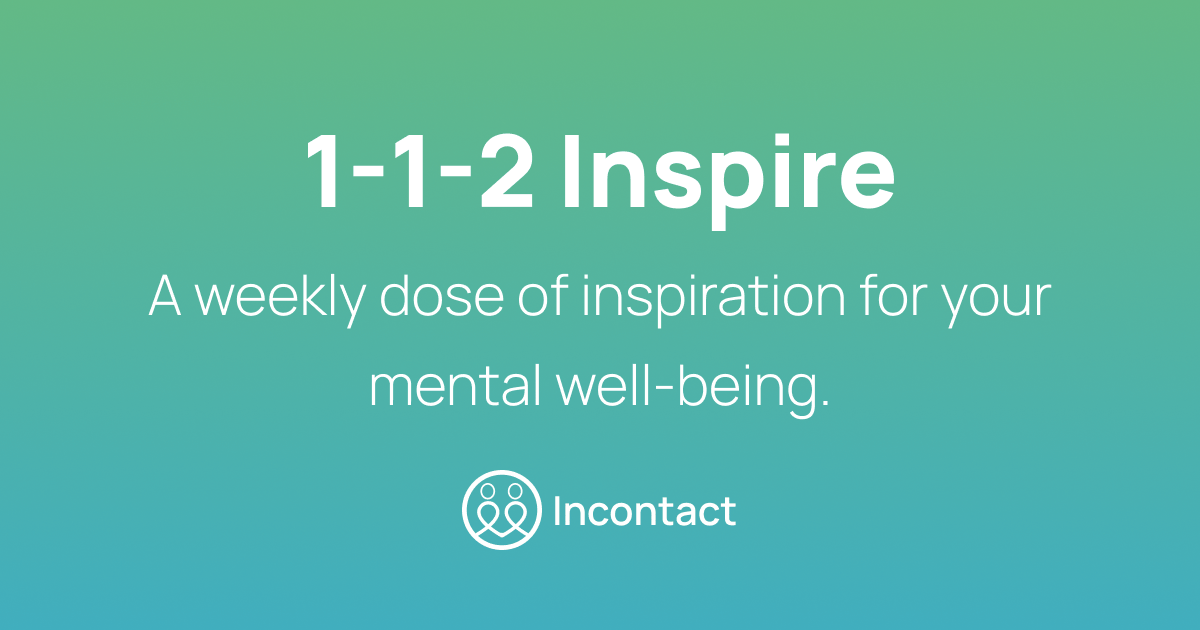- 1-1-2 Inspire
- Posts
- 1-1-2 Inspire: Imposter syndrome or identity lag
1-1-2 Inspire: Imposter syndrome or identity lag
Edition #19

Hi there, I’m Aarti, Founder and Lead Counsellor at Incontact. Welcome to the 19th edition of 1-1-2 Inspire. This week, I want to talk about a form of imposter syndrome that’s less talked about—but surprisingly common. It doesn’t come from a lack of competence or external rejection. It comes from growth. From your outside expanding faster than your inside can process. From the gap between who you were and who you're becoming.
We often think of imposter syndrome as self-doubt. But sometimes, it’s your psyche lagging behind your progress. Let’s explore.
1 Story—The gift inside the gap
A few months ago, a thoughtful, high-achieving client sat across from me. Let’s call her Zoe. On paper, she was soaring. She had just accepted a leadership role in a global organisation. Her peers admired her, and her team saw her as calm, competent, and wise.
But Zoe felt like she was faking it.
“It’s not that I can’t do the job,” she told me. “I am doing the job. I’m doing it well. But it still feels like it’s not me doing it. Like I’m watching someone else perform the role, and I’m just hoping no one notices the swap.”
This wasn’t classic imposter syndrome—the kind rooted in insecurity or fear of failure. Zoe wasn’t doubting her skills. She was wrestling with something subtler: identity lag.
Her inner sense of self hadn’t caught up to her new reality. She still saw herself as “the supportive one,” “the steady team player,” not the one making big calls and commanding rooms. And that mismatch created a quiet ache—like wearing a life that didn’t quite feel tailored yet.
In therapy, we explored how deeply rooted identities—especially the ones formed early—often lag behind external achievements. Especially for women. Especially in cultures where humility is prized. Especially for those who’ve spent years behind the scenes.
Zoe’s discomfort wasn’t a sign of fraudulence. It was a sign of evolution. But because she hadn’t updated her internal narrative, it showed up as dissonance, even distress.
This is what I call “the gift inside the gap.” It’s the discomfort of growth. That subtle, confusing stretch where you’re no longer who you were… but not yet sure you’re allowed to be who you’ve become.
And this experience isn’t limited to the work-life. It appears in all sorts of transitions—moments when your outer life changes faster than your inner identity can keep up:
A new parent, suddenly responsible for shaping a life, quietly wondering, “Who am I to do this?”
Someone newly in love, anxious they’ll be “found out” as unworthy of being seen, known, or adored.
A first-generation student or achiever, who’s broken into rooms no one around them has, but still feels like they’re pretending.
A person undergoing personal healing, finally showing up with confidence but still haunted by an old identity of being broken or lesser.
In these moments, the real fear isn’t failure. It’s being seen before you’re ready to claim the new version of yourself.
Through years of sitting with people like Zoe, I’ve learned this: Imposter syndrome is often not a red flag. It’s a recognition—that you’ve outgrown who you once were.
That your life is evolving faster than your identity. That the discomfort you feel isn’t a signal to stop — it’s an invitation to update the story you’re telling yourself.
The gift inside the gap is growth—but only if we stop resisting it. When you can sit with the awkwardness of not fully recognising yourself yet, you start to give space for the new version of you to settle in.
1 Takeaway—Growth can feel like disorientation
Imposter syndrome isn’t always about insecurity. Sometimes, it’s the side effect of transformation. When your skills, roles, or influence grow faster than your inner narrative, the result is identity dissonance.
This gap is normal. But if left unaddressed, it can slow us down—make us shrink, hesitate, or reject the very opportunities we’ve earned.
You don’t need to shrink to fit your old self. You need to gently expand your identity to meet your new life. That’s not arrogance. That’s integration.
2 Tools to close the gap
Here are two tools to close the gap between who you were and who you’re becoming.
Name the new identity you’re stepping into
Write a short paragraph about who you’re becoming—not just what you’re doing. “I’m someone who leads with clarity.” “I’m someone others trust for vision.” Naming it helps your mind process the shift.
Practice saying “I am” instead of “I’m trying to”
Notice how often you say, “I’m trying to be a good leader,” or “I’m figuring it out.” Swap it for “I am a leader,” “I am capable.” You’re not pretending. You’re growing into the truth.
If you’re feeling like a stranger to your own success, it may simply mean you're in the middle of becoming. Let that be a sign of progress, not a problem.
Growth isn’t always loud or dramatic—sometimes it’s the quiet process of allowing your identity to catch up with your reality.
Warm wishes,
Aarti
Reply